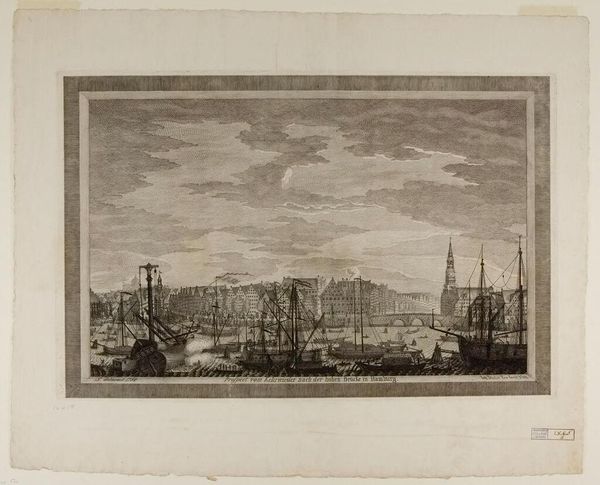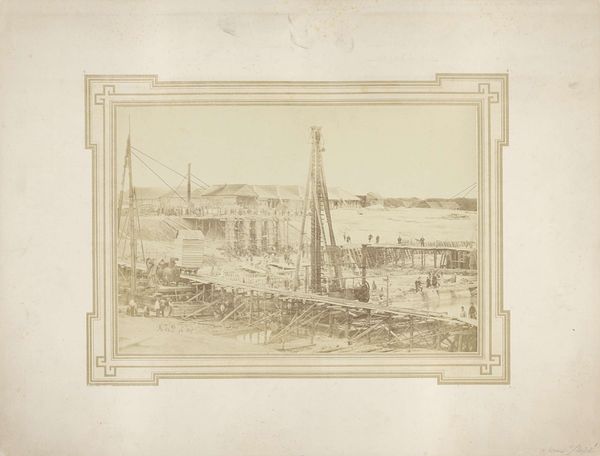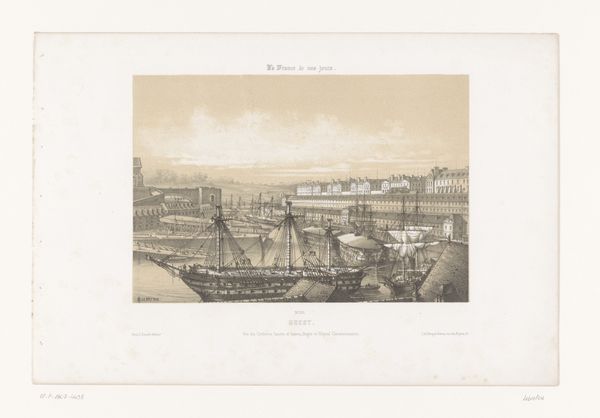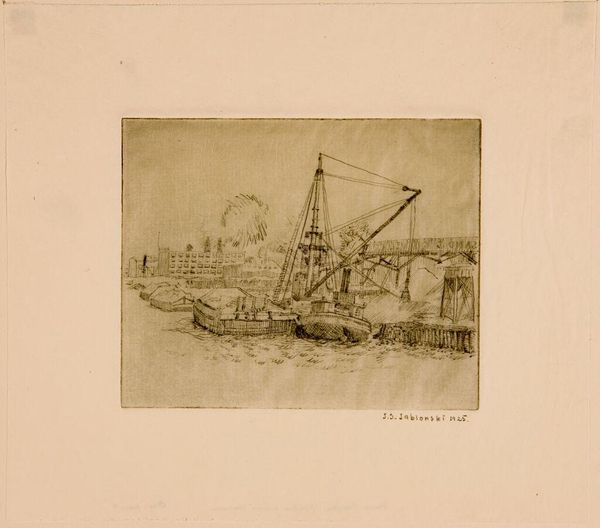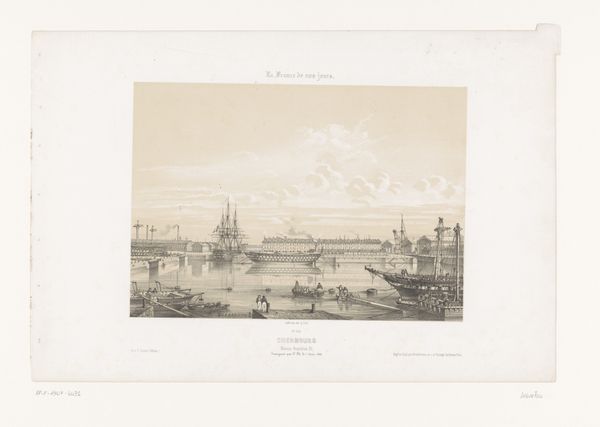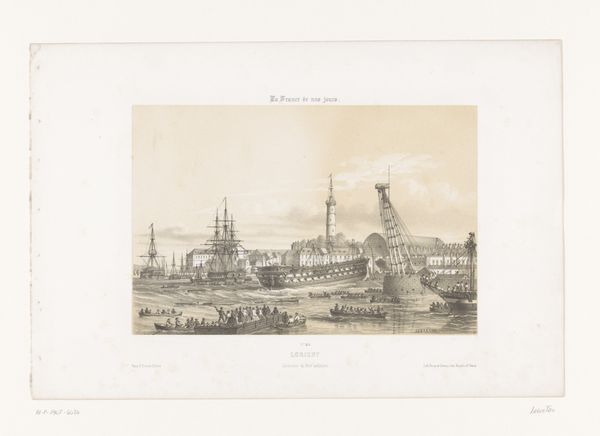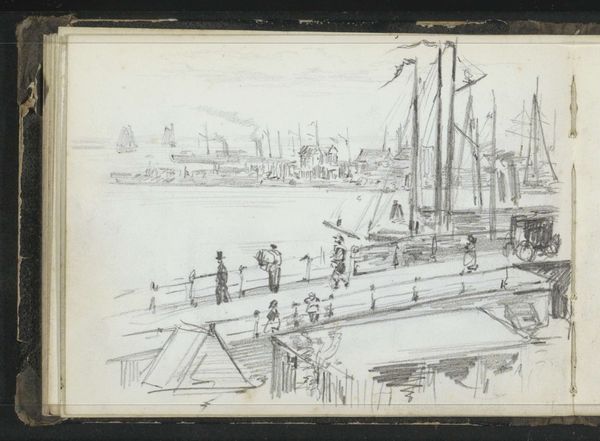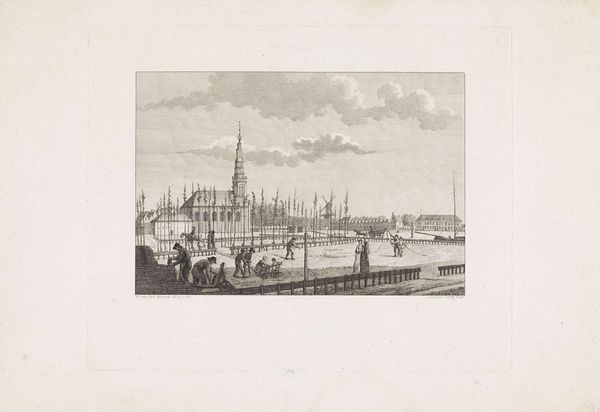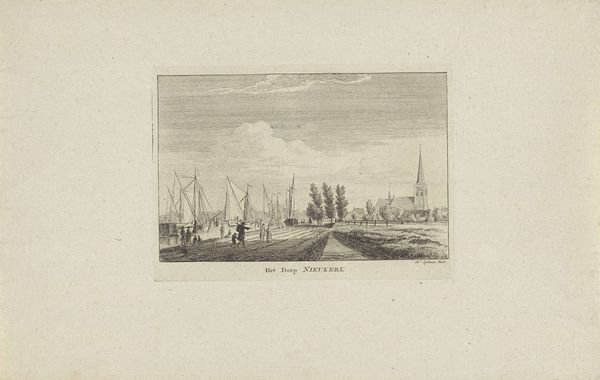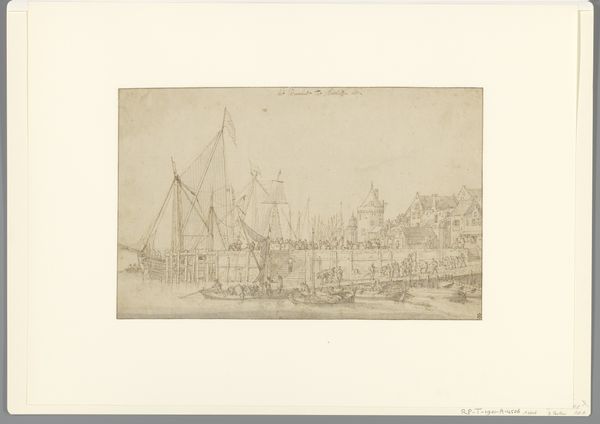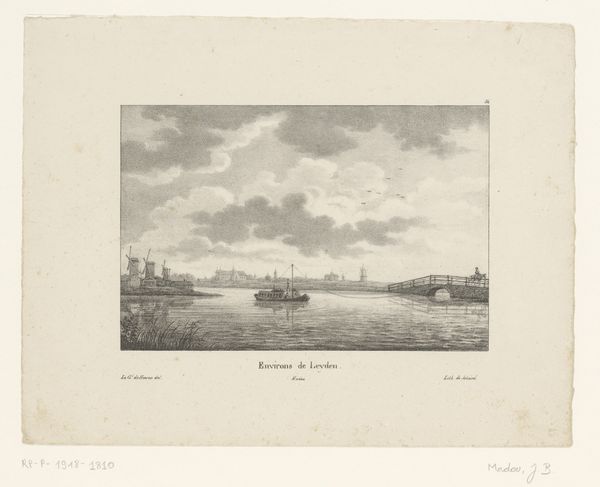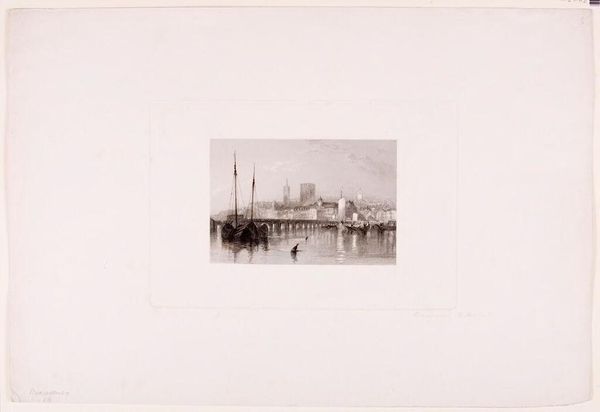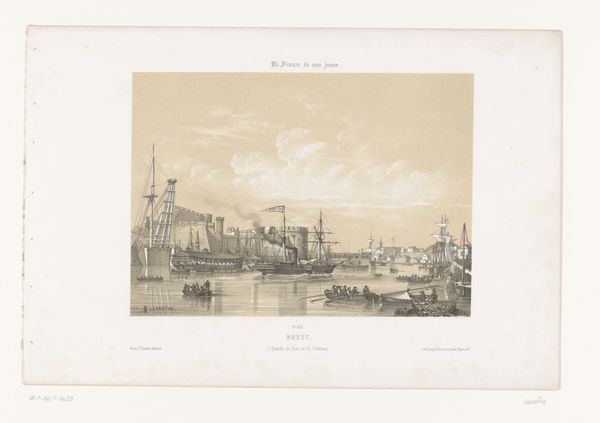
print, photography
# print
#
landscape
#
photography
#
geometric
Dimensions: height 336 mm, width 815 mm
Copyright: Rijks Museum: Open Domain
Curator: Here we have "Progress Made in Sixteen Months," a photograph most likely taken between 1888 and 1889. It showcases the construction phases of a large bridge. What’s your initial reaction to it? Editor: I find it very evocative, in a subdued way. The sepia tones lend a nostalgic air, yet the subject matter, this massive steel structure gradually taking form, speaks of progress, of an industrial power asserting itself. It’s a study in contrasts. Curator: Precisely. Each horizontal register of the photo depicts the structure’s evolution, charting progress through symbolic dates. April, then July, and finally, September. Notice how the structure evolves—the scaffolding morphs into robust forms. The linear elements create geometric patterns that intersect and echo one another across the composition. What cultural memories does this image evoke? Editor: Instantly, it reminds me of the era’s ambition, its often-blind faith in technological advancement, as seen through the rise of social division of labor, exploitation, unsafe labour, etc.. The massive scale, while visually impressive, brings up questions about the human cost, the often-unacknowledged sacrifices of the working class during this era of rapid industrialization. The photographic record risks idealizing or, at best, being silent about such social impact. Curator: That's an important consideration. The bridge becomes a symbol of Victorian engineering prowess. These kinds of steel structures have specific symbolic weight. It signifies bridging the divide and implies a future focused on speed, trade, movement... This era truly believed it was on a road to universal progress. Editor: True. However, to read the bridge’s function only in terms of linking places together glosses over what it actively represents for contemporary viewers. I argue that the image also captures an expression of industrialization that displaced many communities while simultaneously facilitating resource extraction for Western powers to further colonial ambition. Curator: I see what you mean. By reexamining its complex intersections of progress, such an artwork can, despite its initial function, promote a deeper understanding of cultural values that persist into the present. Editor: Right. Hopefully this encounter urges viewers to look beyond face value of this construction feat and become more attuned to its complex relationship to industrial growth, which has real implications in the contemporary sociopolitical landscape.
Comments
No comments
Be the first to comment and join the conversation on the ultimate creative platform.
